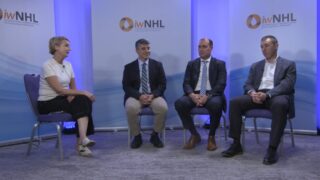CAR T-cells targeting CD19 have been revolutionary in the treatment of diffuse large B-cell lymphoma, but there are several problems with their administration. One of them is logistics, the other one is cost, the other one is that some patients have rapid disease progression and never able to receive the therapy. This all results in that about one in five patients who could be potentially eligible to receive CAR T-cell therapy for diffuse large B-cell lymphoma, truly receives them...
CAR T-cells targeting CD19 have been revolutionary in the treatment of diffuse large B-cell lymphoma, but there are several problems with their administration. One of them is logistics, the other one is cost, the other one is that some patients have rapid disease progression and never able to receive the therapy. This all results in that about one in five patients who could be potentially eligible to receive CAR T-cell therapy for diffuse large B-cell lymphoma, truly receives them. That leaves 75 to 80 percent of patients not being able to receive them. In this scenario, the main limitations are logistics, but then of course we also see that when people receive treatment with CAR T-cells, although their proportions are higher than if they received chemotherapy, there are patients who still relapse and the number is probably more than half of patients in the long term. So we still need more effective therapies, we probably still need more and better therapies, more and better cellular therapies as well as other immunotherapies, and also we need to identify other strategies that are able to maintain the response after we treat patients with CAR T-cells. And this probably means leveraging everything that we have in our armamentarium, including immunotherapy, including novel cell therapies, being able to use allogeneic cells as well as other types of cells, and maybe improving the CAR T-cells so that the toxicity decreases, so we can actually treat people with cell therapies without having adverse effects on the patient that we see currently.
This transcript is AI-generated. While we strive for accuracy, please verify this copy with the video.















